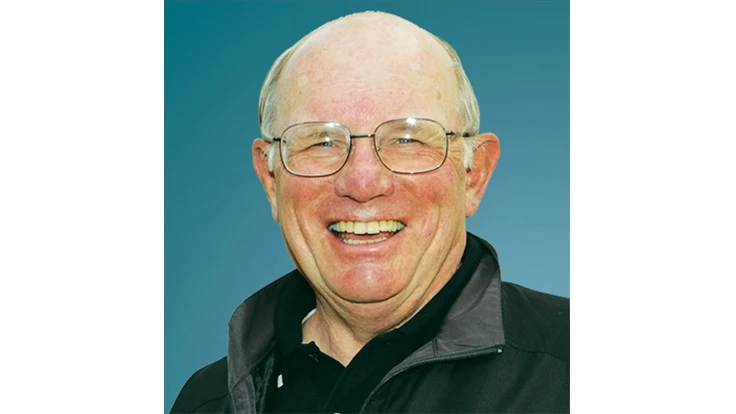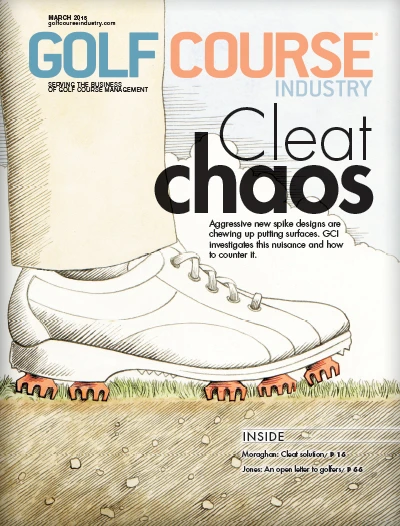
 Monroe Miller Monroe Miller |
Early in my career I spent a lot of time thinking about and searching for sure things. I suspect this stems from an aversion to great risks and a drive for perfection. This, despite the well-worn phrase, “The only sure things in life are taxes and death.” (And a good accountant can sometimes remove the tax part.) From the time we are born, we are on an inexorable march to the grave. That is a sure thing you can count on. This past Christmas, our gray and khaki-colored landscape was causing consternation. “Don’t worry,” I’d say, “we always have a white Christmas. That’s a guaranteed sure thing.” Well, not this year. Such incidents have happened to me in my life more times than I could count. I’m not alone among superintendents when I say I was always on the lookout and searching for a sure thing. It wasn’t that long ago a colleague and good friend announced he had found the answer to putting green aerification. “It’s a sure bet,” he told me. His sure bet lasted until the greens committee nixed it. For me, that search for a sure thing covered the spectrum from control of certain diseases to green speed. I read all of the popular journals, many of the scientific ones that had some connection to turf. I was usually in the front row of seminars and educational meetings, hoping to learn the sure thing that would solve a serious problem I was confronting. I was on a search for a combination of factors that, taken together, would be the silver bullet of my turf management program. Right after I started my career as a superintendent, the sure thing for better fairways was replacing tractor-drawn pull-frame mowers with an out-front mower. It took time and a lot of promises to get those Toro 223s, and by that time, I was searching for a sure thing to control summer patch disease on our fairways. Summer patch was a “new” disease and was initially called “Poa annua decline.” Fungicides weren’t working, and I offered our sixth fairway for some fungicide trials by our turfgrass pathologist, Dr. Gayle Worf. I was giddy when an experimental material showed nearly perfect control. It was a material that eventually became Bayleton, the first of the sterol-inhibiting fungicides. All I could think of was “here’s my sure-fire answer to nearly perfect fairways.” It did work very well, for a time. Then we had to raise the rate we were using; then it was settling for some reduced control. That led to studies that indicated resistance was a possibility with these materials. Then came the research leading to combinations, timing, and a host of other factors. A sure thing? Not even. When you accrue a certain amount of experience on a golf course, at some point it dawns on you that you probably won’t ever find that sure thing. It doesn’t mean you stop searching and calculating, but that ultimate prize, however defined, gets away. However, the quest isn’t a waste of time. You make your assessments and evaluations, measure what did and did not work, make corrections, and learn from the process. I guess you call that experience. Years ago it was Franklin Pierce Adams who changed my thinking. He was a well-known writer, columnist and radio personality from my parents’ generation. He observed: “The best you get is an even break.” It made sense when I first read it, and it has taken on even more significance as the years have gone by. You never will find silver bullets for your golf course problems. It would be too easy. The alternatives? Hard work, smart management, attention to detail and a hundred other traits we are all familiar with. FPA was right about an even break, and that is what most of us hope to catch. Or at least a good break to smooth out the tough ones that will inevitably come your way. Adams’ observation makes even more sense for superintendents because we deal with the weather (unpredictable), plant growth and health (extremely variable), and people (players and employees). Throw in government regulation, economics and machinery, and one wonders how we can ever hope to catch an even break. But I suspect we will never stop looking.
Monroe Miller retired after 36 years as superintendent at Blackhawk CC in Madison, Wis. He is a recipient of the 2004 USGA Green Section Award, the 2009 GCSAA Col. John Morley DSA Award, and is the only superintendent in the Wisconsin Golf Hall of Fame. Reach him at groots@charter.net. |

Explore the March 2015 Issue
Check out more from this issue and find your next story to read.
Latest from Golf Course Industry
- From the publisher’s pen: Conscientious of a bigger role
- Bernhard and Company partners with Laguna Golf Phuket
- Terre Blanche showcases environmental stewardship
- VIDEO: Introducing our December issue
- Bernhard and Company introduces Soil Scout
- Nu-Pipe donates to GCSAA Foundation’s Centennial Campaign
- GCSAA enhances golf course BMP tool
- Melrose leadership programs sending 18 to 2026 GCSAA Conference and Trade Show





